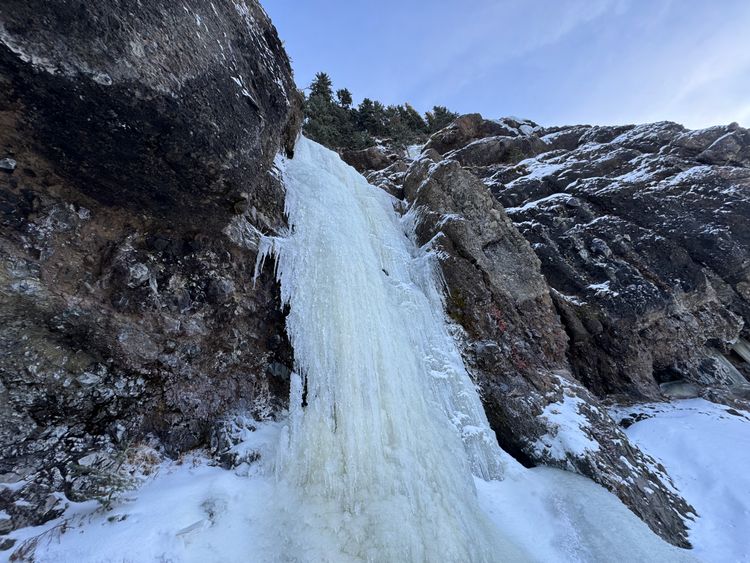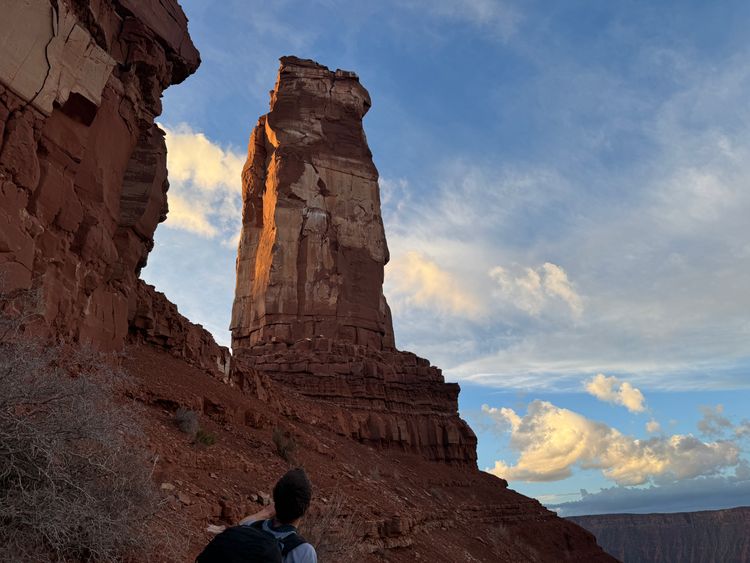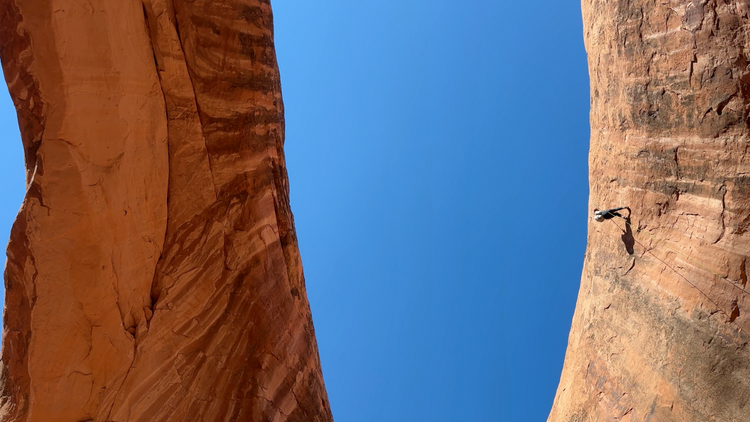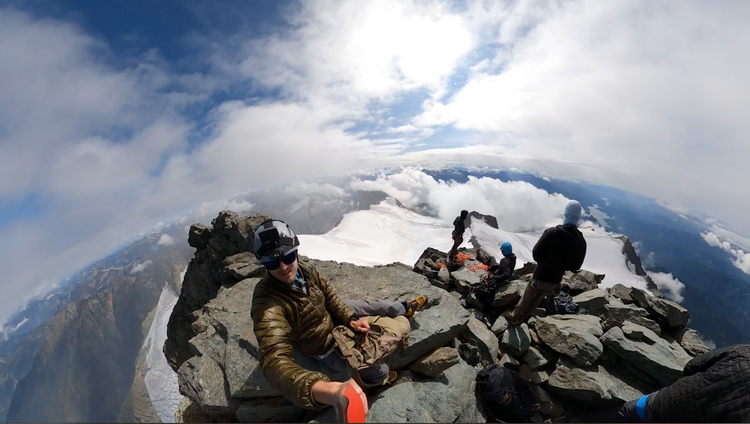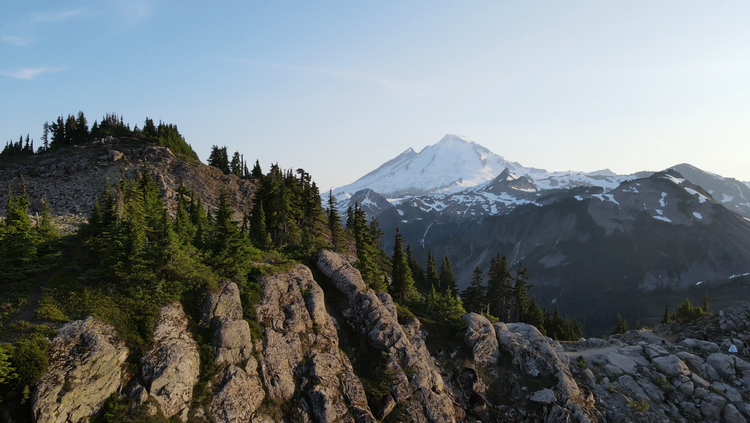Climbing the Grand Teton
Podcast version on Spotify here.
In January of this year I read Jon Krakauer’s Into Thin Air which documents the tragedy on Mount Everest in May, 1996. Krakauer happened to be part of a doomed expedition and recorded the disaster, wherein eight climbers died on the mountain over the span of 24 hours, in excruciating detail. I realize now that seeking out mountaineering challenges in the wake of that reading is probably a strange reaction, but most of the book is not about the tragedy itself, but the context and lead-up to it. A good chunk of Into Thin Air investigates why people become obsessed with mountain climbing. For many, including Krakauer, it’s about achievement in a very pure and physical sense. You either get the summit... or you don’t. That stark line between success and failure and the terrible beauty of big, deadly mountains have an allure that I cannot deny.
I’m not going to pretend that this expedition was anything akin to the rigor or peril of something like Everest, but it was my first, proper mountaineering expedition, and fraught with many of the same dangers one finds in any significant alpine endeavor. Nearly half of our party of twelve clients did not summit for one reason or another, though everyone returned to the trailhead safely.
The Grand Teton’s summit rises to 13,775 feet above sea level. It is immediately recognizable from fifty or more miles away. The towering mountain looks down on both Idaho and Wyoming, and it stands next to its siblings on the central massif: The Middle Teton, Mount Owen, Teewinot, and the South Teton. Together, they form a mighty sight, emerging sharply from the rolling plains.
I set out on this adventure with my Dad and my flight-instructor-turned-great-friend, Jason. In the days leading up to the climb, we camped out in Flat Creek, and put together some delicious meals.
The first guided day was prep. Our guide, “Weez” (short for Weasel, a nickname earned in his younger years), literally showed us the ropes. I’ve climbed plenty, but it had been a while, and I struggled on a slippery 5.7. We recapped belay procedure and the shouted, staccato commands like “up rope,” “slack,” “off belay,” etc. You’re often separated from your climbing partner by a fair distance, so you have to be concise in what you yell. We also covered how to use “trad” (or “traditional”) protective equipment like cams and nuts, which you place into cracks and crevices in the mountain to act as anchor points if you fall.
We woke at 5:30am the next day and made maple bacon and eggs in the chilly morning air. We were next to an elk refuge, and we could hear them honking at each other during the night, which lent the whole place a really wild air.
The drive to Lupine Meadows got the butterflies in my stomach going. The whole approach to the trailhead you can see your objective, way up there, buffeted by severe winds, and caked with snow. It looks really unforgiving and mean.
We met up with Weez at 8am in the Lupine Meadows parking area. He was already there in his beige truck, suiting up. He handed us our food bags, containing dinner and snacks for two days at high camp. We did a final gear check and set off.
I lined up behind Weez on the ascent and I started pelting him with questions about climbing in the Tetons. Along the way, we got on the topic of lightning. The Tetons are famous for unpredictable and extremely hazardous thunderstorms. In 2010, 16 were injured and one person died in a fast-forming storm that reared up on the peak of the Grand.
Weez had several tales of his experience with lightning from his twenty-plus years climbing in the area. During an ascent of one of the peaks in the central massif, Weez said the sky became overcast and he began to hear a persistent buzzing sound. He could tell there was a lot of static in the air but didn’t know where lightning might strike. The buzzing changed pitch and started to crescendo. Using the sound as a guide, he timed a jump into the air (so as not to be a conductor to the ground), and, just as he did this, a bolt struck in his vicinity and he was hit in the chest by a large air blast and knocked off his feet. Comforting.
On a large switchback section a few miles into the trail, we saw an adolescent brown bear rooting around in the bushes. It had absolutely no interest in us or our fellow hikers, but freaked out tourists kept clapping their hands and blowing whistles. The bear just continued to munch on vegetation.
We arrived at high camp after about six miles and 4,300 feet of elevation gain. With the exception of the guides, all of us were fairly hammered on arrival. The loungey chairs were a particularly welcome comfort. The Jackson Hole Mountain Guides high camp is spartan. A smattering of Mountain Hardware expedition tents amongst a boulder field above the glacial moraine below. The main feature is the tan-colored weatherport. Inside, a surprising array of cooking stoves, pots, steamers, and bins. One of the guides told me that they got most of it up here by schlepping. I had a hard time imagining the pain of lugging a full propane tank to camp. I realized then just how difficult guiding this mountain actually is. You do all the labor and unseen tasks so that clients can enjoy charcuterie at 11,000 feet.
After a dinner of bison meatballs and pasta, we chatted with the other guests. It was a delightful and surprising discovery that all were salt of the earth. They hailed from all over the place too: Les from Cincinatti who already had a very impressive summit record under his belt, Bailey and Polly from Michigan and Nebraska, another couple from San Diego, and so forth. The sense of camaraderie was immediate.
The guides briefed us that we’d be split into teams of one to two and our starts would be staggered the next morning. For Dad, Jason, and I, our assigned wake-up time was 3:00am and departure slated for 4:30am. We were last out. Others had starts much earlier. Everyone at camp went to bed around 8:30pm.
Since three dudes would have been a tight squeeze in the tent, I slept in what the guides call the “A-Frame” which is a cave formed by two boulders that smashed together probably hundreds of years ago. Over time, people had plugged up any holes with smaller rocks and pebbles. It was actually a very comfortable bivy and I didn’t suffer from the same overheating problems that folks in the tents did.
I was up at 2:00am with the voices and sounds of guides preparing breakfast and coffee in the weatherport, or “hut” as they call it. Weez told us not to congregate by the weatherport before our assigned time, so I stared up at the stars in the gaps in the roof of the A-Frame and took some footage of the cozy hut, illuminated orange against the night from within.
At 3:00am we broke our fast in the hut with bagels, bacon, and microwave burritos and washed it all down with mug after mug of black coffee. Weez informed us that he’d be taking Dad and Jason as a pair and that I would be buddied up with Nik, another of the guides. Three, he said, would just be too logistically complicated and slow to manage up on the peak. I understood this much better later.
Nik, my guide, is probably a year or two older than me but he has the stamina and physique of an Olympian. The day before, he soloed a 5.9 pitch below high camp, summited the Middle Teton, and then climbed Disappointment Peak for fun. Now, he was up at 3:00am with us and ready to guide me up the Grand.
At 4:30am, Nik and I set out, descending into the moraine and to the headwall below the Lower Saddle, which sits between the Middle and Grand Tetons. I discovered that Nik had a pretty serious, no-bullshit demeanor, probably due to the added amount of hazard. The day before, the National Park Service distributed an urgent message to all would-be climbers advising against the ascent to the Saddle, because a massive rockfall had wiped out the usual fixed line that people use to protect their climb up the headwall. The previous night, our guides found an alternate route straight up the middle of the wall. It was precarious since there was so much loose rock.
Nik and I hiked quickly to the headwall and stopped. We could see the headlamps of several teams ahead of us in the dark. It was strangely beautiful. We waited on the boulder field below for a long time, however. A big traffic jam had formed. “Rock! Rooock!” someone yelled frantically. A soccer-ball sized boulder flew off one of the ledges along the alternate route and thunked into the snow below. It gathered speed and rocketed like a missile some fifty yards to my left and slammed into the glacial ice far below. I heard a bit more commotion above; terse voices.
Nik, frustrated, called up to the other guides on the wall to get moving. In alpinism, big delays are usually bad news. You don’t want to give inclement weather a chance to develop. Finally, the route cleared and we began our ascent. After my guide led the rope up and began belaying me from above, I jammed his cam by accident as I tried to dislodge it. Having just met Nik, I found this extremely embarrassing and I was sure he thought I was a total klutz.
We got to the top of the saddle and one of the other guides approached Nik about the couple she was guiding. They were the ones who had kicked off several large rocks and didn’t warn climbers below. Apparently, they weren’t following instructions well, and they were climbing sloppily. She wanted to “spin” them (which means turn them around back to camp) and a heated argument ensued. The other guides backed her up. This pair could not be trusted higher on the peak, where the rock hazards and need to follow guide direction become even more severe. After a long and emotional discussion, the whole team turned back, all the way to the trailhead, and I never saw them again.
Nik and I continued up the saddle onto the flanks of the Grand. Our pace slowed with the steep terrain.
We arrived finally at the first pitch of the Pownall-Gilkey route. It was first climbed in 1948 by Richard Pownall and Art Gilkey (who later died on an American expedition to K2). The first pitch is a traverse up slabby rock. You’re roped in because it’s extremely exposed, with hundreds and hundreds of feet of open air off the ledge. The second pitch is graded 5.8, but there are straps you can grab onto that make the whole thing easier. I did this with relish. The third is a 5.6, straightforward ascent, followed by a few more fourth class scrambles to the summit ridge.
In five hours and eighteen minutes, we summited the Grand Teton alongside another team, Pete and Bailey. Pure, momentary euphoria. We all high-fived and sat on the summit for about ten or fifteen minutes. The sweeping views in 360-degrees were stunning. You could get a good sense of where the glaciers sat above Jackson and the surrounding plains, flattening the valley into a pancake.
The wind was cold, though, even through all of my layers. Our pace was such that, unfortunately, I was about an hour and half in front of Dad and Jason’s team. We had to move.
Our descent took us down the west face of the Grand, and Nik set me up on a 120-foot rappel, which is partially free-hanging. I haven’t actually rappelled that much in my climbing career and so this was probably the singularly most scary moment of the trip. Unfortunately, my GoPro battery died before you can really see the exposure.
The rest of our downclimb was largely uneventful, but hard. My knees were screaming in pain by the time we reached the saddle again and my triceps and shoulders hurt from all of the pressing on the rocks on the steeper sections.
At the saddle, we encountered a British man wearing a fluorescent yellow shirt. He was asking the best way to get down. Nik asked if he had a harness. Exum, another guide company, had by this point installed a new fixed line down the middle of the headwall, an easy rappel. The man said he didn’t have a harness. Nik asked if he had an ice axe. Again, the man said no. Nik, exasperated, asked if the man knew how dangerous it was to be here in these conditions without any equipment; if he had seen the National Park Service report on the rockfall. The man said no. Nik shook his head, “just don’t move until we’re out of the way, okay? We don’t want rocks coming down. You’ll have to glissade down the area where the rock slide happened. Highly dangerous, but it’s your only option.”
The man looked chastised and nervous. Nik and I rappelled down the headwall and marched quickly across the snow to the boulder field to get out of the way of any potential rock missiles. The British man slid on his butt down the dangerous section and arrived at the boulders safely.
We continued back down the Moraine and up into high camp by a path the guides call “the back door.” I plonked down into one of the lounge chairs, utterly spent. Nik, the olympian that he is, bid me farewell and continued back down to the trailhead. I demolished a cup of coffee and a huge plate of crackers, guacamole, and hummus. I practically dozed off in my chair while chatting with Les, who was first team and finished ahead of me, and a few of the guides.
Two hours went by before I finally saw my Dad and Jason rappelling and then glissading down the snow field below the headwall. They looked exhausted, so I went down the path and met them on the moraine to carry anything they wanted up the final stretch. We fist bumped and proceeded up the hill, not talking much. We all collapsed into chairs back at camp.
I was feeling terrible that we didn’t all get a picture together on the summit, but Dad and Jason brushed it off. I read somewhere, probably in a Krakauer book, that mountains and summits are incredibly personal. I have no way to explain what happened other than I went into a kind of trance on the Upper Saddle. I forgot about my summit mission entirely, in fact, and the idea that I was climbing with other people at all. I had a sense of being intensely present, trying not to fall, trying not to fuck up the protection gear retrievals, trying not to rain rocks on my fellow climbers, gripping the rappel line so hard that my arms hurt and my skin was stretched painfully taut over my knuckle bones.
The mood at camp was mixed that evening. Lots of revelry and fist bumping going around, but also some reservation among those who did not summit. I felt a kind of bone-tired I’m not sure I’ve ever experienced. It’s the sort of fatigue that can only be cured by several nights of good sleep.
I crawled back into the A-Frame after eating the leftovers of two other team’s appetizers along with my dinner, pot roast and mashed potatoes.
The next morning, after a fitful night of sleep in my cave, I awoke to the sunrise on the Nez Perce peak, its top-section illuminated orange.
We congregated around the hut for a final time, gulping enormous amounts of black coffee, eating weird combinations of blueberry bagels smeared with cream cheese and stuffed with bacon. We bid farewell to our fellow climbers. I truly do hope to see many of them again. We began our descent.
Toward the Lupine Meadows trailhead we noticed the crowd morph and change from climbers with big packs, ropes, helmets, and ice axes, to heavier-set day hikers seeking more modest destinations. We reached the cars and high-fived.
After packing up in the car and bidding farewell to Weez, Dad, Jason, and I settled into burgers and beers at Dornan’s, right outside the park. We stared up the peak of the Grand, still jagged, still foreboding. I resolved at that moment that I must continue. This experience was transformative. I feel stronger for it. Rainier, Denali, here I come.
